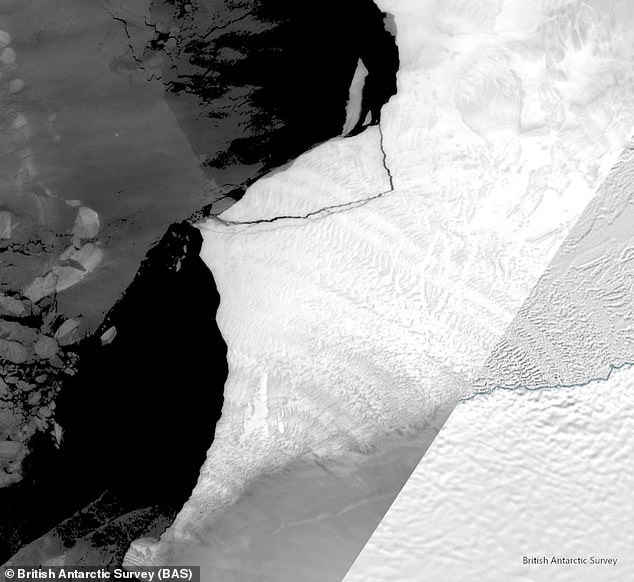Incredible new images show the birth of a huge iceberg in Antarctica that is about the size of the Isle of Wight.
The huge floating iceberg, called A83, has a total area of 380 square kilometers (146 square miles) and is about 150 meters (490 feet) thick.
According to experts, it broke off from Antarctica’s Brunt Ice Shelf on Monday, just weeks after a new crack was detected in satellite images.
According to the British Antarctic Survey (BAS), the movement of iceberg A83 is now strongly controlled by ocean currents.
“As of this morning it had moved about a mile to the west and had rotated slightly,” Dr Oliver Marsh, a glaciologist at the British Antarctic Survey (BAS), told MailOnline.
A new crack in the ice that runs perpendicular to the Halloween crack (which runs horizontally) has given rise to the new iceberg, called A83.
On Antarctica’s Brunt Ice Shelf, named after Welsh meteorologist David Brunt, several icebergs have calved in recent years.
The latter, A83, finally came out after a vertical crack connected to a previously existing horizontal crack, like scissors cutting a paper triangle.
About 30 miles wide, the horizontal crack is called Halloween Crack because it was discovered on October 31, 2016.
But the shorter vertical crack, measuring 14 kilometers (8.6 miles), was not detected until April 26 of this year.
The final rupture occurred in the early hours of Monday (May 20), according to BAS experts who studied satellite and GPS data.
“This shedding has been expected since the appearance of Halloween Crack eight years ago,” Dr. Marsh said.
“(This) reduces the total ice shelf area to its smallest extent since monitoring began.”
Ice shelves are large floating shelves of ice that are connected to a land mass, such as Antarctica, although they are also found in other polar locations such as Greenland.
These shelves act as a protective buffer for continental ice, preventing the entire Antarctic ice sheet from flowing into the ocean, which would dramatically raise global sea levels.
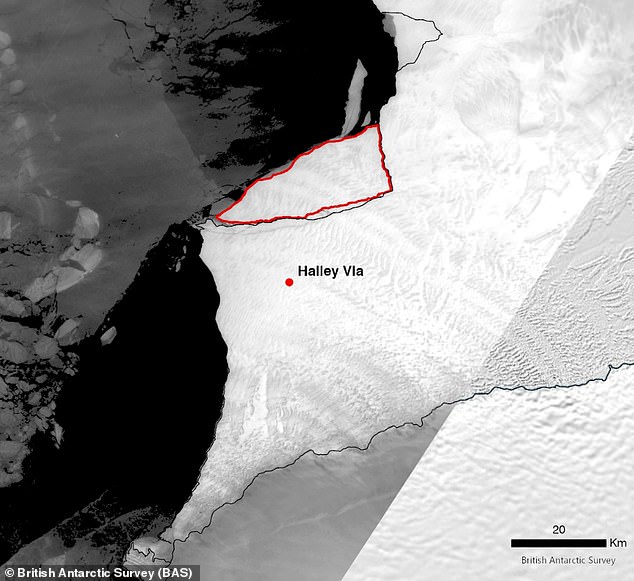
The outline of the new iceberg is shown in red. Nearby is Halley VI, a relocatable research station operated by the British Antarctic Survey (BAS).
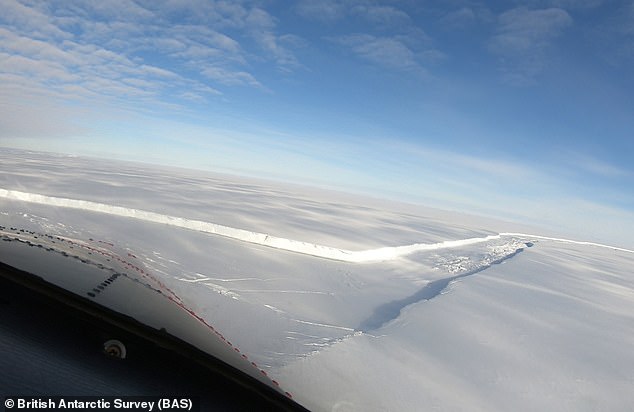
Pictured is a still image from a flyover video of a huge chasm that appeared on the Brunt Ice Shelf, filmed in January 2023.
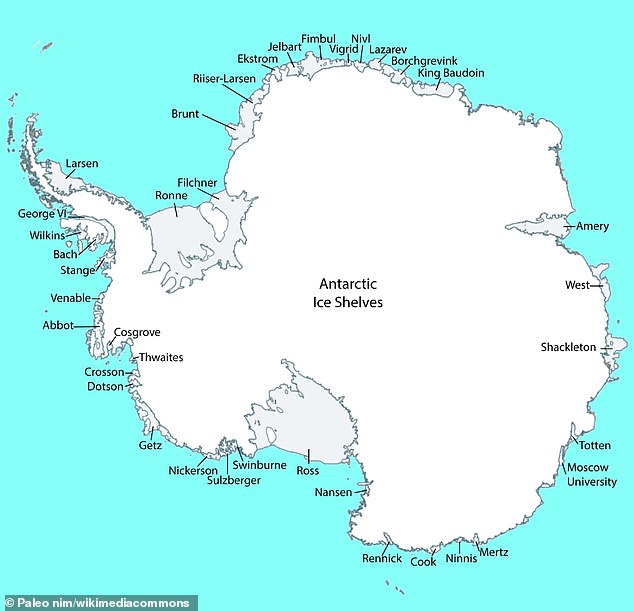
Antarctica is home to several ice shelves marked on this map, including Brunt, Shackleton, and Ross. Brunt is east of the Antarctic Peninsula (the part that sticks out of the Antarctic continent like a small tail)
The melting of ice shelves has been linked to global warming, but according to BAS, the cracks that gave rise to iceberg A83 were created by a natural process.
Dr Marsh said the iceberg broke off due to the flow of the Brunt Ice Shelf towards a fixed point on the sea floor (known as McDonald Ice Rumples).
“Over time, this created a bending stress in the ice north of Halloween Crack that increased to exceed a critical value,” he told MailOnline.
“This type of calving is just one of the mechanisms by which the ice sheet loses mass to remain in balance with the snowfall that occurs throughout the year.”
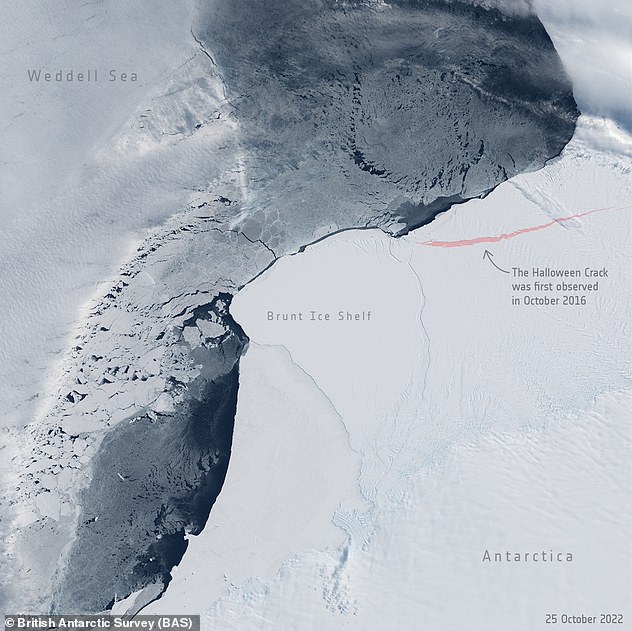
The horizontal crack is called Halloween Crack because it was discovered on October 31, 2016. The last measurement of the crack (before the separation event) placed it at approximately 30 miles wide.
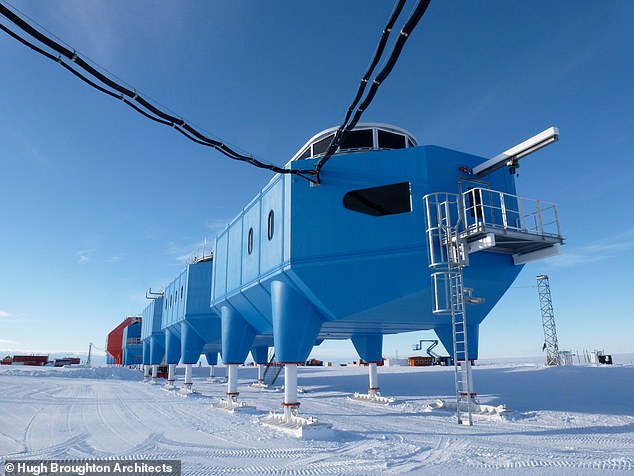
The Halley VI station consists of eight units, each of which sits on skis so they can be easily maneuvered away from the edge of the ice shelf when necessary.
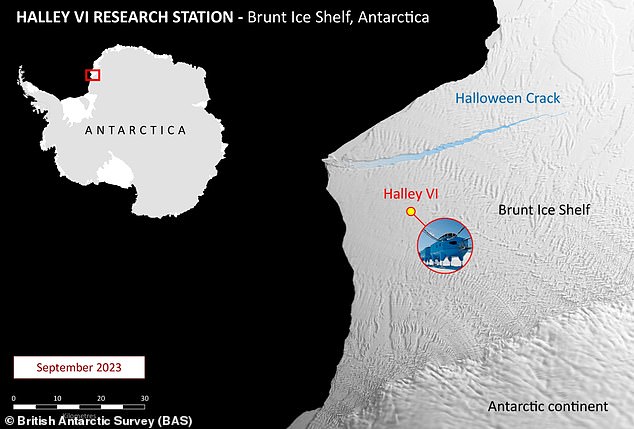
The horizontal crack is called Halloween Crack because it was discovered on October 31, 2016 and is approximately 30 miles long. This image shows the crack in September 2023.
The Brunt Ice Shelf is also the location of BAS’s Halley VI research station, where important monitoring work is carried out.
Halley VI consists of eight units, each of which sits on skis so they can be easily maneuvered away from the edge of the ice shelf when necessary.
In 2016, the same year Halloween Crack was detected, BAS experts took the precaution of relocating the base 14 miles inland, further from the water.
If it had stayed put, it would have disappeared in an iceberg that broke off in January 2023.
Halley VI is currently unstaffed, but a new team will return to the station in November.

